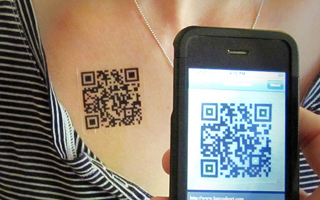
According to data in a comScore report released today, most QR code-scanning consumers are between the ages of 18 and 34, and around a third are in households making $100,000 or more per year.
[aditude-amp id="flyingcarpet" targeting='{"env":"staging","page_type":"article","post_id":319952,"post_type":"story","post_chan":"none","tags":null,"ai":false,"category":"none","all_categories":"marketing,mobile,","session":"C"}']And for all the flack the print industry gets for being behind the digital times, almost half of all QR code scans originated with printed magazines and newspapers.
What this means for marketers and other decision-makers today is that QR codes, while rapidly evolving and gaining in adoption, are still far from being a mainstream technology. As a tool for reaching a diverse audience for a range of goods and services, QR codes have not yet arrived. Nevertheless, their popularity is growing rapidly — one report from QR company Jumpscan estimates a 1200% increase in QR code scanning during the last six months of 2010.
AI Weekly
The must-read newsletter for AI and Big Data industry written by Khari Johnson, Kyle Wiggers, and Seth Colaner.
Included with VentureBeat Insider and VentureBeat VIP memberships.
For mobile marketing executives and managers, this data represent an interesting guidepost for how mobile QR code campaigns should be targeted and where codes should be placed.
“QR codes demonstrate just one of the ways in which mobile marketing can effectively be integrated into existing media and marketing campaigns to help reach desired consumer segments,” said comScore senior vice president of mobile Mark Donovan in a release.
“For marketers, understanding which consumer segments scan QR codes, the source and location of these scans and the resulting information delivered is crucial in developing and deploying campaigns that successfully utilize QR codes to further brand engagement.”
ComScore’s research showed that in June, more than 14 million U.S. mobile users scanned QR codes. Altogether, these mobile users make up 6.2 percent of the total mobile audience. Of these 14 million, 60.5 percent were male, 53.4 percent were between 18 and 34, and 36.1 percent made $100,000 or more annually.
Around 58 percent of scans occurred while users were at home, with an additional 40 percent of users saying they scanned codes while in retail stores. As previously mentioned, traditional magazines and newspapers led the pack of QR code sources, coming in at 49.4 percent of user responses. Around 35 percent of respondents said they scanned codes on product packaging.
All told, the vast majority of QR code scans came from physical or print sources such as business cards, flyers or brochures. Around 27 percent of respondents said they’d scanned a code found on a computer screen, and less than 12 percent said they’d scanned a QR code they saw on a television screen.
[aditude-amp id="medium1" targeting='{"env":"staging","page_type":"article","post_id":319952,"post_type":"story","post_chan":"none","tags":null,"ai":false,"category":"none","all_categories":"marketing,mobile,","session":"C"}']
Other stats show that around 30 percent of QR code scans are conducted on Android phones, with 21 percent of scans coming from iOS devices and 17 percent from Windows phones.
Image courtesy of scott blake.
[aditude-amp id="medium2" targeting='{"env":"staging","page_type":"article","post_id":319952,"post_type":"story","post_chan":"none","tags":null,"ai":false,"category":"none","all_categories":"marketing,mobile,","session":"C"}']
VentureBeat's mission is to be a digital town square for technical decision-makers to gain knowledge about transformative enterprise technology and transact. Learn More